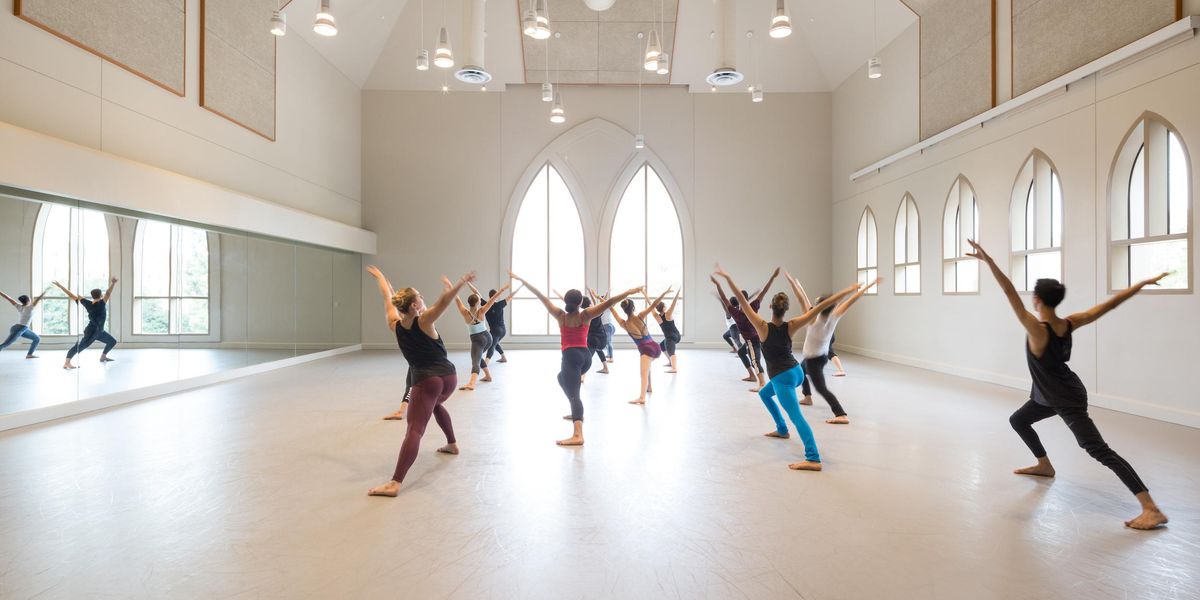State of the Union
How dancers’ unions are faring in the current economy
Brooke Moore (right) is both a principal dancer and an AGMA delegate for Pennsylvania Ballet. Photo by Alexander Iziliaev, courtesy Pennsylvania Ballet.
Once considered the keystone of the American middle class, unions in the United States have been losing membership recently. Traditionally-unionized industries have become a reduced sector of the nation’s workforce, and state governments have limited union power. According to the U.S. Bureau of Labor Statistics, union membership has fallen to 14.6 million, a rate of 11.1 percent of total U.S. wage and salary workers; in 1983 the membership was 17.7 million, or 20.1 percent. With this reduction comes a loss of clout and bargaining power. So how are the dancers’ unions doing in this economic climate?
The union associated with concert dance, including ballet and contemporary companies and dancers in operas, is AGMA, the American Guild of Musical Artists. AGMA’s sister unions include AEA (Actors’ Equity Association), which covers musical theater artists; and AGVA (American Guild of Variety Artists), which represents performers in variety shows. SAG-AFTRA (a merging of the Screen Actors Guild and American Federation of Television and Radio Artists) represents actors and dancers in film, television and commercials.
The benefit of a union, says Alan Gordon, AGMA’s executive director, “is that the dancers are both protected against injury and have a voice about what happens to them.” AGMA helps negotiate health-care options for its members, and has negotiated retirement plans, better working conditions and rehearsal restrictions. Recently, New York City Ballet dancers procured a new exercise/health facility at Lincoln Center. For these benefits, AGMA dancers pay 2 percent of their gross pay in dues, along with a $78 annual fee. The initiation fee for joining is $500.
According to Gordon, AGMA is doing well, particularly when many arts organizations are struggling. “Most of the companies are healthy and we’re not suffering the loss of membership,” he says. “Our membership gets larger every month, and dancers are getting paid better.” AGMA dancers’ salaries have generally kept pace with inflation, although runaway housing costs in urban centers like New York and San Francisco remain a challenge.
There are currently 22 AGMA dance companies—more than there were 10 years ago—including new inductees such as Ballet West and Ballet San Jose Silicon Valley. They range from big-budget troupes like NYCB, where the weekly salary in 2015 for a first-year corps member is $1,137, with 37 guaranteed weeks, to smaller-budget companies like Tulsa Ballet, where first-year corps members earn $578.01, with 40 guaranteed weeks. Gordon says that 80 to 85 percent of professional dancers in established companies are AGMA members, even in right-to-work states, where workers are not required to join a union in unionized companies.
Not all dance unions have been doing as well. AEA’s 2013–14 analysis of employment and earnings stated that, post–Great Recession, “in such times, stability may be the best goal achievable.” It also noted that employment in theater “may not yet be progressing at the same rates” as in the past, “but it is not shrinking either, and the same is true of member earnings on Equity contracts.”
Gordon says that AGMA negotiates its contracts differently from AEA: “Equity has three or four major contracts. We have contracts for individual companies, and we only have people who are actually dancing take part in the negotiations.” The current minimum guaranteed Equity salary for a dancer in a Broadway show is $1,861 per week, but a show’s long run is never guaranteed. Under AGVA contracts, the Rockettes earn around $1,500 per week, although their work is seasonal.
Gordon cites two factors for the durability of AGMA-affiliated troupes. “They are non-profit companies whose artistic motivations go beyond simply making a profit,” he says. “The companies always bargain aggressively, but dancers are the company, so there’s no point in screwing around with the company.”
Life as a Delegate
AGMA delegates are company artists who enforce union rules, act as intermediaries between artists and management and orchestrate contract negotiations. Brooke Moore, a principal dancer with Pennsylvania Ballet since 2012, has been an AGMA delegate for three years.
On being a delegate
: “I want to stand up for the dancers because I believe so strongly that if we are taken care of physically, mentally and emotionally, we perform better.”
On contract gains
: “The last negotiations were about providing a better work environment, like getting our casting ahead of time and getting notice of when répétiteurs and choreographers are in town.”
On negotiation presentations
: “We compare PAB to ballet companies with similar budgets to see how we rank with things like physical therapy, pay scale and overtime rates.” —JC




